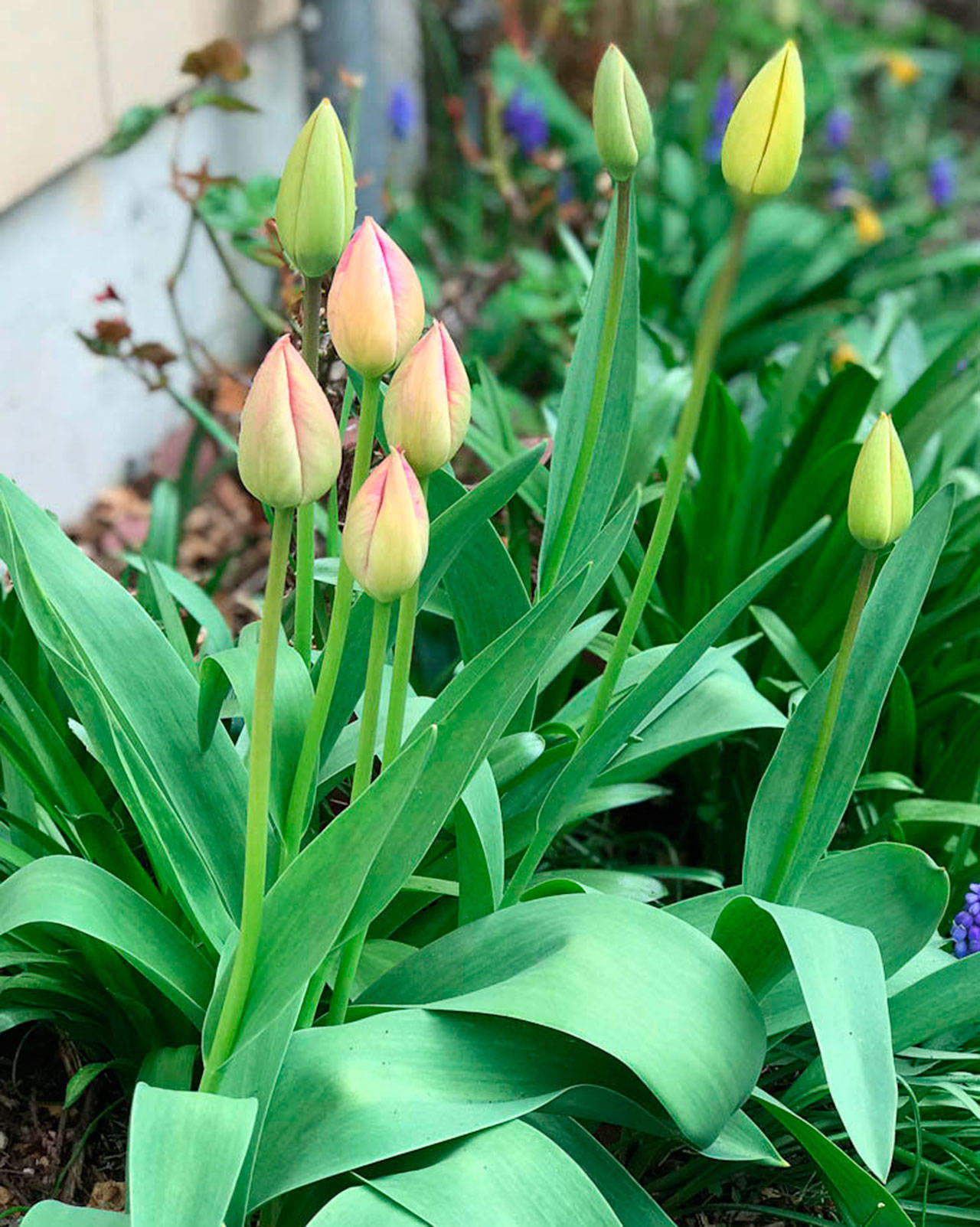There is so much to do and think about in the April garden that even seasoned gardeners may find themselves wandering aimlessly between projects. So grab a clip board, take a tour of your garden and start prioritizing the tasks.
If you haven’t already taken a close look at your soil, that should be number one on your list. Healthy soil is the foundation to any garden, without which all other efforts may be unsuccessful.
Compacted or heavy clay in soil stays cold and wet longer than soil having more organic matter. Organic-rich soil also delivers water, nutrients and air to the plant roots more effectively.
If you don’t know if your soil is lacking in nutrients, testing it now will allow time to incorporate needed nutrients before spring planting. The Clallam Conservation District provides soil testing for $20, which is money well spent. Details, including how to collect the soil sample, are available online at clallamcd.org.
Once garden beds are amended and raised planters are topped off with compost or other amendments it’s recommended to install soaker hoses and drip systems before planting. Laying out these materials when plants are in place or after seeds sprout can result in damage to the plants.
No watering system is efficient without a timer. Even a simple manual timer at the hose bib can protect plants from over-watering accidents.
In the vegetable garden, plan to sow cool season vegetables including Asian greens, beets, carrots, chard, lettuce, onions, parsnips, peas, potatoes, radishes and spinach directly into the garden.
Transplant cool season vegetable starts into the garden after the average last frost date. Before transplanting, “harden-off” seedlings to outdoor conditions gradually over 7 to 10 days.
It’s important to note that the average last frost date for the lower elevations in Sequim is mid-April. However, average means it could be earlier or later. Always be prepared to cover tender plants in case of a late frost.
Warning, be patient with heat-loving crops. Plants like tomatoes, peppers, squash and basil will not benefit from early outdoor planting. In fact, cold soil temperatures can damage or kill these plants.
However, April is the time to start tomatoes, peppers, eggplants, squash and basil indoors under lights or in a greenhouse if not already started. See upcoming “Get it Growing” columns for information on micro-climates and how to modify your garden to assist warm weather crops.
In the flower garden, finish pruning plants, including roses. Fertilize established roses every four to six weeks through July. Plant seeds of asters, cosmos, marigolds and zinnias. Move stored fuchsias and geraniums outdoors; cover if frost returns.
It may already be time to clean up your spring blooming bulbs. Remove faded blossoms but leave healthy foliage to make food for next year’s display. Fertilize bulbs once after bloom. At the end of the month, plant summer-blooming bulbs, rhizomes and tubers such as gladiolus, lilies, begonias and cannas.
It’s never too early to keep your garden weeded and clean to prevent pests and diseases. Patrol for insects and pests and control manually before they cause problems. Some insects may cause a little cosmetic damage but may not harm the crop. Avoid using products that may hurt beneficial insects.
Susan Kalmar is a WSU Clallam County Master Gardener.



